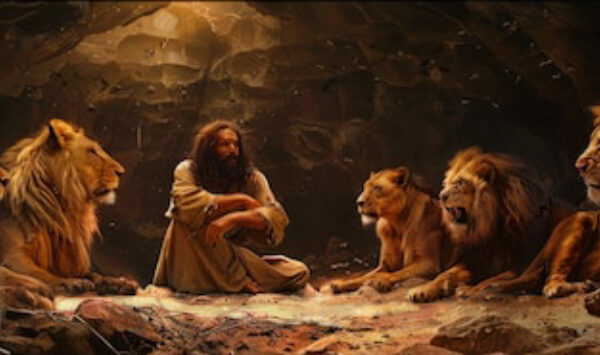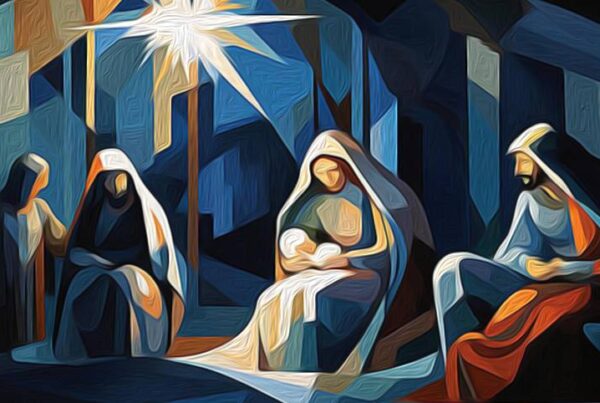Day Two
Scripture Reading: Mark 2
A few days later, when Jesus again entered Capernaum, the people heard that he had come home. They gathered in such large numbers that there was no room left, not even outside the door, and he preached the word to them. Some men came, bringing to him a paralyzed man, carried by four of them. Since they could not get him to Jesus because of the crowd, they made an opening in the roof above Jesus by digging through it and then lowered the mat the man was lying on. When Jesus saw their faith, he said to the paralyzed man, “Son, your sins are forgiven.”
Now some teachers of the law were sitting there, thinking to themselves, “Why does this fellow talk like that? He’s blaspheming! Who can forgive sins but God alone?”
Immediately Jesus knew in his spirit that this was what they were thinking in their hearts, and he said to them, “Why are you thinking these things? Which is easier: to say to this paralyzed man, ‘Your sins are forgiven,’ or to say, ‘Get up, take your mat and walk’? But I want you to know that the Son of Man has authority on earth to forgive sins.” So he said to the man, “I tell you, get up, take your mat and go home.” He got up, took his mat and walked out in full view of them all. This amazed everyone and they praised God, saying, “We have never seen anything like this!”
Once again Jesus went out beside the lake. A large crowd came to him, and he began to teach them. As he walked along, he saw Levi son of Alphaeus sitting at the tax collector’s booth. “Follow me,” Jesus told him, and Levi got up and followed him.
While Jesus was having dinner at Levi’s house, many tax collectors and sinners were eating with him and his disciples, for there were many who followed him. When the teachers of the law who were Pharisees saw him eating with the sinners and tax collectors, they asked his disciples: “Why does he eat with tax collectors and sinners?”
On hearing this, Jesus said to them, “It is not the healthy who need a doctor, but the sick. I have not come to call the righteous, but sinners.”
Now John’s disciples and the Pharisees were fasting. Some people came and asked Jesus, “How is it that John’s disciples and the disciples of the Pharisees are fasting, but yours are not?”
Jesus answered, “How can the guests of the bridegroom fast while he is with them? They cannot, so long as they have him with them. But the time will come when the bridegroom will be taken from them, and on that day they will fast.
“No one sews a patch of unshrunk cloth on an old garment. Otherwise, the new piece will pull away from the old, making the tear worse. And no one pours new wine into old wineskins. Otherwise, the wine will burst the skins, and both the wine and the wineskins will be ruined. No, they pour new wine into new wineskins.”
One Sabbath Jesus was going through the grainfields, and as his disciples walked along, they began to pick some heads of grain. The Pharisees said to him, “Look, why are they doing what is unlawful on the Sabbath?”
He answered, “Have you never read what David did when he and his companions were hungry and in need? In the days of Abiathar the high priest, he entered the house of God and ate the consecrated bread, which is lawful only for priests to eat. And he also gave some to his companions.”
Then he said to them, “The Sabbath was made for man, not man for the Sabbath. So the Son of Man is Lord even of the Sabbath.”
Devotional:
In Mark as in Matthew, Jesus refers to himself frequently as “Son of Man.” This is a Messianic title and comes primarily from Daniel 7:13-14. As a description of Jesus, it refers to his humanity, that is, he is a son of mankind. We are all sons (and daughters) of man, but notice that Jesus is the Son of Man, not merely a son of man. And as the Son of Man, Jesus is also the Son of God. Jesus comes into conflict with the teachers and Pharisees over several important issues in this chapter such as the forgiveness of sins and the Sabbath laws. These conflicts build in intensity from the second chapter throughout Mark until the trial and crucifixion. Concerning forgiveness of sins, the teachers are correct. Only God can forgive sins. So when Jesus heals the paralytic, proving that he can also forgive sins, the teachers should have concluded that Jesus is exactly who he says; the Son of God.
There is no doubt that Jesus is the focus of every event in this chapter. He forgives sin, he is come to call sinners, and he is the bridegroom and the Lord of the Sabbath. For those who don’t believe him, this would be infuriating. But to those who know who he is, this is further revelation.
Questions to ponder:
- We know who Jesus meant when he spoke of “sinners.” But who were the righteous? Who are they today?
- How do you deal with the Sabbath law? Do you take a day of rest?



